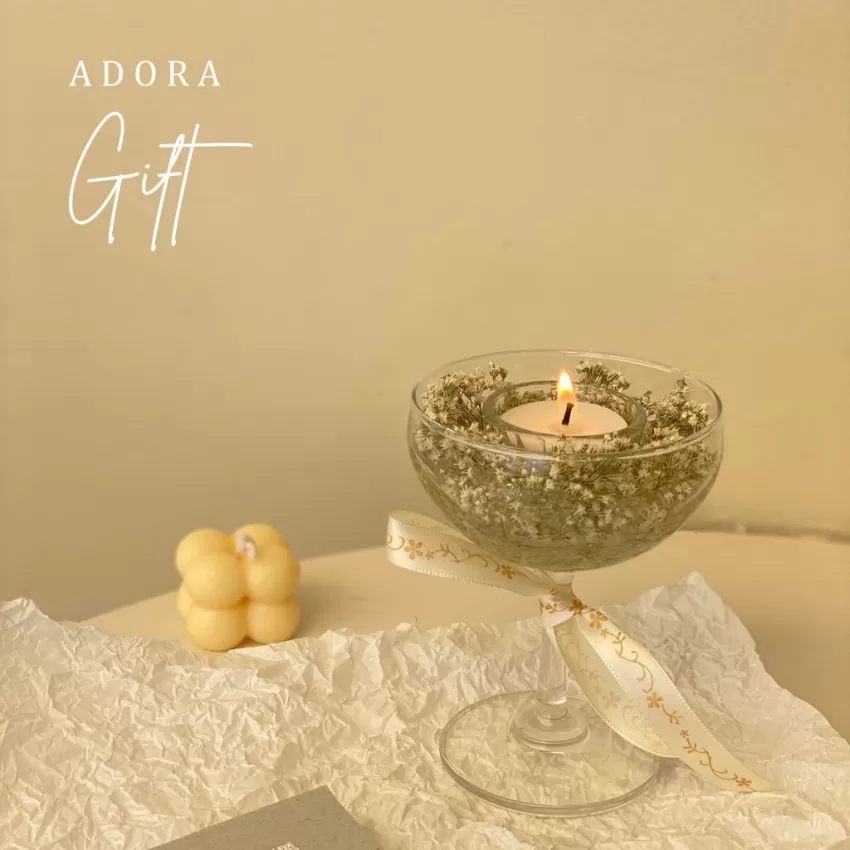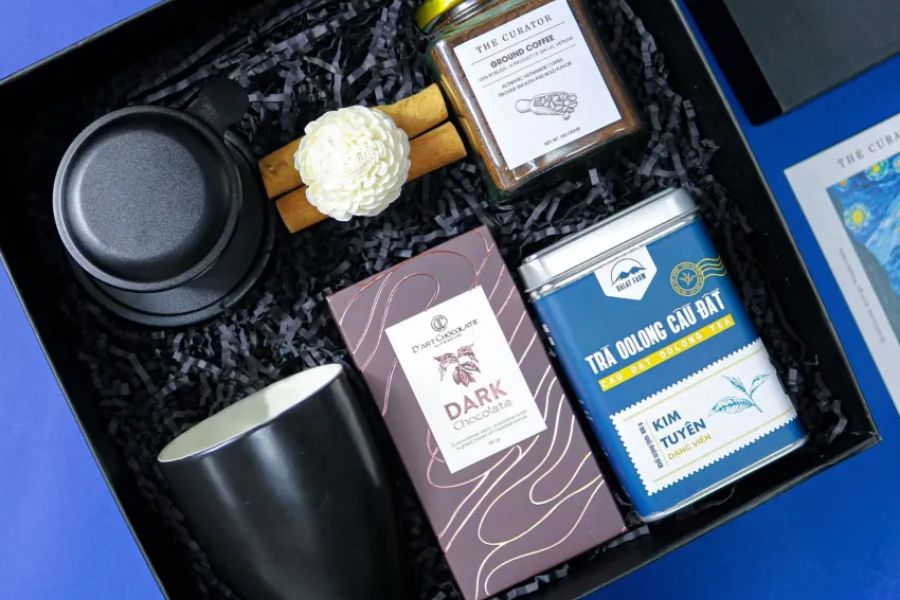- Jun 19, 2024
What Types of Wax Are Used in Handmade Scented Candles?
One of the most crucial factors determining the quality and safety of scented candles is the type of wax used. Handmade scented candles not only provide a pleasant aroma but also create a cozy and relaxing atmosphere in your home.
This article will guide you through popular types of candle wax, including paraffin wax, soy wax, beeswax, coconut wax, palm wax, and gel wax. Join Chus to explore the origins, characteristics, pros, and cons of each type of wax so you can select the best products for your family's health and well-being.

Scented candles can be made from various types of wax (Image: Kofuku Home | CHUS)
Types of Wax Commonly Used in Scented Candles
1. Paraffin Wax
Paraffin wax is the most commonly used wax in industrial candle making, extracted from petroleum. It easily blends with various fragrances and colors, making scented candles with strong scents and diverse colors.
Pros:
- Affordable.
- Excellent scent retention.
Cons:
- Not environmentally friendly.
- Can release harmful compounds like benzene and toluene when burned.
- Produces thick black smoke when burned.
2. Soy Wax
Soy wax is made from soybeans, a renewable and environmentally friendly resource. Soy wax burns cleaner, with less smoke, and does not release harmful toxins, making it safer for health.
Pros:
- Eco-friendly.
- Biodegradable.
- Burns longer.
Cons:
- Lower scent retention.
- Higher cost.

Nến thơm thuần sáp đậu nành thường có giá cao hơn (Photo: Chia Kandles | CHUS)
3. Sáp ong
Beeswax is a natural wax produced by honeybees. It ranges in color from light yellow to dark brown and has a mild, natural honey scent. Beeswax candles burn longer, emit negative ions that purify the air, and have a firm texture that is easy to mold.
Pros:
- Eco-friendly.
- Long burn time.
- Natural air purifier with negative ion when burnt.
Cons:
- More expensive.
- Strong natural scent may not suit everyone.
- Not suitable for vegan consumers.

4. Coconut Wax
Coconut wax is made from coconut oil, a natural and sustainable source. It burns cleanly, with minimal smoke, and has a smooth texture that holds fragrance well and disperses it evenly.
Pros:
- Eco-friendly.
- Safe for health.
- Long burn time.
Cons:
- Can be more expensive, often blended with other waxes to balance cost.
5. Palm Wax
Palm wax is derived from palm oil, produced on a large industrial scale. It burns for a long time, with little smoke, and retains fragrance well, making attractive scented candles.
Pros:
- Long burn time.
- Firm texture, easy to mold.
- Affordable.
Cons:
- Palm oil products are often considered unsustainable.
6. Gel Wax
Gel wax is made from mineral oil and polymer resin, commonly used for decorative candles due to its transparency and aesthetic appeal. Gel wax allows for the creation of scented candles with embedded decorative objects like seashells, gemstones, or dried flowers.
Pros:
- Long burn time.
Visually appealing effects.
Cons:
- Not suitable for all types of scented candles.
- Less environmentally friendly than natural waxes.
Tips for Using Scented Candles Safely and Effectively
Placement:
Choose a flat, stable, heat-resistant surface for your candle, away from flammable materials like curtains, papers, or fabrics. Place candles in well-ventilated areas but avoid strong drafts to prevent excessive smoke and fire hazards. Always keep candles out of reach of children and pets, and never leave a burning candle unattended.
Trimming the Wick:
Before lighting, always trim the wick to about 0.6 cm (1/4 inch). This helps stabilize the flame, reduces black smoke, and extends the candle's burn time. A long wick can produce a large flame, causing the candle to burn faster and generate more smoke, which can impact air quality and health. Additionally, a large flame can cause uneven melting of the wax, leading to unwanted tunneling.
Even Burning:
Allow the candle to burn long enough during the first use for the wax to melt completely across the surface from edge to edge. This prevents tunneling, where the wax only melts around the wick, leaving tall walls on the sides. Even burning helps distribute the fragrance better and prolongs the candle's life.
Proper Storage:
Store scented candles in a cool, dry place to prevent melting or warping from high temperatures. Keep the candle covered when not in use to avoid dust and preserve the essential oil fragrance. If the candle doesn't have a lid, use candle containers or wrap it tightly with plastic wrap. Proper storage not only maintains the candle's quality but also ensures safe usage.

Buying Natural Wax Scented Candles at Chus.vn
We hope this article has provided you with valuable insights into the different types of candle wax and how to use scented candles safely and effectively. Choosing natural wax scented candles that are safe for your health is the ideal way to enjoy a fragrant and relaxing living space.
Visit Chus to experience and purchase a variety of natural essential oil scented candles, handcrafted by skilled artisans. Chus guarantees products free from paraffin wax, ensuring safety for your health and being eco-friendly. With a wide range of designs and fragrances, each candle at Chus embodies passion and sophistication, bringing you an exceptional experience.










